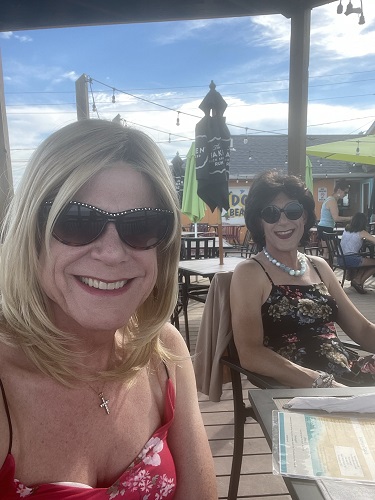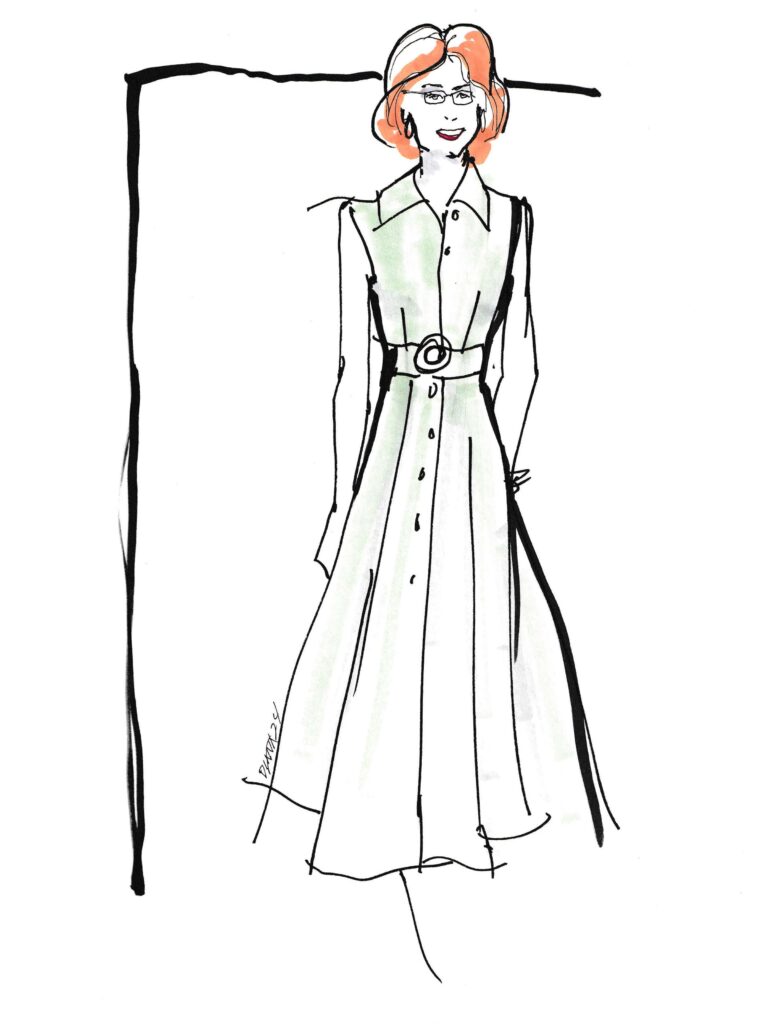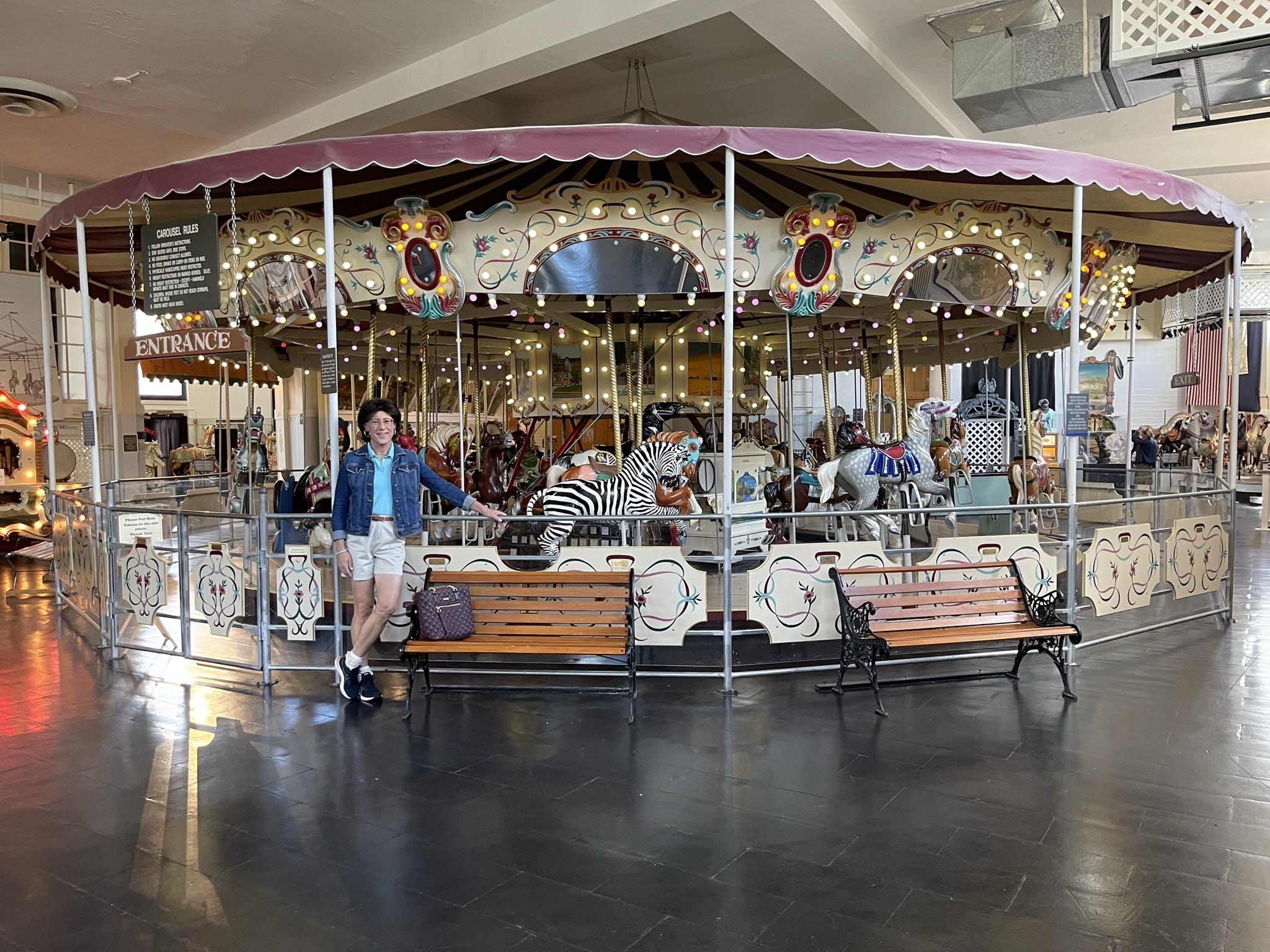By Lisa P.
This post was born of the kind of e-mail exchanges I am blessed to have on occasion with Lisa. I am awed by her and am sharing this with her permission.
How does one best describe a journey: chronologically or thematically? Perhaps that depends on the journey. A journey into gender may be best described thematically, although there is always a danger that the themes will be misinterpreted due to the changing norms relating to the terms used. With those caveats, I will do my best to describe my gender dysphoria journey based on the themes that have defined it.
Meaningless Phrase
In the beginning, that is when I was too young to have spent any time in self-analysis (as the focus was simply on living), and in the end (that is now, when my self-analysis has finally taken a back seat to simply being), gender dysphoria has had no meaning for me. Either I didn’t know there was anything to worry about, or my focus has shifted away from focusing on how I feel. Thus, one theme is that my gender dysphoria can be seen through the lens of the philosophical query: if a tree falls in a forest and there is no one there, does it make any sound? If I am not “there,” emotionally, to listen for the “sounds” of discontent regarding my birth gender, can I be suffering very seriously from gender dysphoria?
The muddy middle ground, however, is more complicated. For almost 50 years I did worry a lot about the way I felt about my birth gender. But, over that time, my vocabulary changed, my understanding of my inner phobias changed and my goals and desires changed as well.
Sexual Expression
For example, there was the early, sexually charged aspect of my gender exploration, when excitement accompanied my exploration of gender, for reasons I couldn’t explain but didn’t try to avoid. I now know that this aspect can be deeply troubling for many transgender people, as it can easily cause one to misidentify the roots of one’s gender expression. That certainly happened for me. Yet, deep down, even during that period, I realized there was something far more fundamental involved: a feeling of contentment that was wider in scope, deeper in depth and longer in time than a burst of excitement and resolution. This theme I therefore now deem to be a red-herring. That is, it took my eyes off the ball in terms of gender expression, even though as a theme it repeatedly presented itself as something that looked real and necessary to confront.
Crossdressing
The theme of “cross dressing” was less a red-herring and more a misapplication of a well-worn phrase. It seemed simple to say, easy to apply to my gender expression, and allowed quick resolution into something that could easily be kept “boxed up” and in the closet (to be brought out only when the pressures of life caused me to feel like I needed this aspect of myself as a pressure relief valve). Thus, while the words have meaning, and definitely apply to someone like me who regularly wears the clothing of the opposite gender binary, applying the phrase to myself felt “incomplete” in terms of explanation. My first realization of the incompleteness resulted from my constant need to perfect my presentation and transform myself comprehensively, rather than in an isolated way. Looking in the mirror, there was simply no way I was satisfied with a single article of clothing. In fact, I only became satisfied when the person in the mirror looked as close as possible to the opposite gender. I would find myself saying, “there she is!” Those experiences should have made me realize that gender presentation meant something to me far beyond simply exploring certain aspects of femininity.
Transgenderism
The theme of transgenderism has come closest to helping me truly explore my gender dysphoria, because although it is an umbrella term, it is most commonly applied to persons who have or intend to fully transition from one end of the gender binary to the other. Once I realized that the term applied to me, I needed to understand whether I should be considering transition. That consideration brought me to the point where I needed to understand whether I have gender dysphoria and if so (given that I hadn’t really considered it well enough theretofore) just how severe it is. Unraveling that problem turned out to be rather difficult. For one thing, my mind (like most minds) prefers easy solutions. “No need to trouble your pretty little head worrying about that anyway, because you have it all figured out!” Figuring out whether and the extent to which one has gender dysphoria is not that easy. Moreover, the results of that analysis can be lifechanging and have serious consequences not only for the person with dysphoria, but also for everyone in their social circle (with the worst of such consequences likely falling on anyone with whom one is intimate). For that reason, my own exploration has been a decade in the making and has occurred in baby steps.
Indirect Action
The first baby steps I took without realizing I was taking them. In that sense, these steps involved another theme: indirect action. I began by taking a step to change my body, simply because I liked the result. One step was followed by another. These steps were not that big in social terms, mind you, as to date no one in my social circle (save my lovely bride) has really noticed. As I recall, the first step was shaving my legs all the time, not just episodically. That was followed by shaving everywhere else, eventually including my forearms. Soon, I was plucking my eyebrows and subtly moving them “higher” toward my brow bone. When my wife began using a serum that lengthens eyelashes, I began to use the same formulation. Simultaneously, I began on a daily basis to use women’s products to moisturize and soften my skin, and I started to apply products to my nails to deal with my constant problem of cracking nails (largely caused by my swimming, I should add).
In addition, I began to take very seriously my eating and exercise routine to keep my body as “svelte” as possible. Finally, I began to consider dermatological treatments that would delicately feminize my face (saying to myself that I would tell the dermatologist and anyone who asked that I simply want to look younger). One day I came to the realization that although these changes were not or would not be permanent, because I could stop taking these actions and my body would revert back, I had no desire to ever go back to the way I was. In other words, I had made the mental decision to change my body. I was forced to ask myself why I was doing all these things, if I was completely comfortable with my male body. The truth must be that I am not completely comfortable with my aging male body and that in fact I have been pursuing feminization, albeit on a basis that is less complete than one would seek in a full transition to female.
Professional Assistance
I suppose the final realization that I do have some gender dysphoria came when I had a professional psychologist give me that feedback when I sought counseling for my gender issues. I felt fairly certain that she would say that I was basically 50-50 male/female, with a need to express both sides. She even told me that was the position she initially took. But, the more she listened to me, the more solidly she swung into the “female” side, and so her diagnosis was “transwoman”: I am a male with very real gender dysphoria. She acknowledged that I showed no inclination to medically transition, but her diagnosis was that I met the criteria for doing so. That diagnosis, while not exactly an “aha” movement, certainly made me realize that I needed to really examine the depth of my dysphoria. By doing so, it became apparent to me just how much I prefer presenting as a female, not because I hate presenting as a man (in fact, I have realized along the way that I have adapted to being assigned male at birth pretty darn well), but simply because that is who I am.
Time and Energy
One additional theme that has come out of the gender dysphoria realization is that I am now much more conscious of just how much actual time and emotional energy I have been taking thinking about my gender and the way it is expressed. Also, I realized that the pace of those effects had accelerated over the past few years, and I was spending much less time and energy on other aspects of my life that really deserve my attention. For that reason, I decided to explore microdosing estrogen (with no suppression of testosterone), with the goal of helping me address the dysphoria without transitioning. After more than four months exploring that solution, the jury is still out on how well it is working. My overall impression is that it is working for me to some degree. I have been able to shift some of my focus away from my gender. It has also given me the opportunity to think about how I would feel if I went off HRT, and the fact that it makes me feel sad to think that I might need to do that is an indication that it has very real emotional value for me. Still, it is something that I will continue to validate and consider. There is no doubt that HRT is changing me somewhat, and not all of those changes are welcomed by my lovely spouse. So, that experiment may need to replaced with other things to help me feel validated.
Staying Grounded, but Lifting Off
Along the way, I have found that continuing to spend time as a male has been helpful. Staying grounded in that way has reinforced my sense that I don’t feel terrible distress at being seen as a male or being called by my birth name or by being referred to as “he/him.” All of those things are just fine with me. Spending time as a female, especially in social situations, on the other hand, has reinforced my sense that I belong in the female world and that being a female socially is one of my greatest joys and lifts me up.
So, there you have it. My journey is incomplete. It won’t end until I pass from this world, I am sure. But, in the meantime, I am at a point where the focus is more on me being me, and that is sufficient. If I can maintain this balance it will allow me to be looking more “outward” to a hurting world and less “inward” to a hurting psyche. The good news is that I now worry less about my gender dysphoria. I retain a concern that I might come to a new realization that I can’t possibly live without being a female all the time. The concern relates not to the impact on me, but rather on the impact it would have on my spouse, who has stuck with me throughout this journey. Given the slow progress I have been making so far, however, I doubt I will come to that realization anytime soon, if ever. Perhaps, it won’t happen until I am near death, when being male or female will be completely meaningless.
Counseling myself today, I say these words: “Go with the flow and don’t worry that pretty little head too much; you may not have it all figured out, but you are doing just fine!”












7 Responses
A very thoughtful and enlightening “essay”, Lisa. Thanks for this. It certainly makes one think and be introspective about one,s journey. Although I am not as advanced in my journey and probably won’t get that far, there is a lot here to think about and consider.
Thank-you
Donna
Lisa, I love your ‘deep dives’ and this was definitely one of your best so far.
Your assertion that the sexual angle can be can be ‘deeply troubling for many transgender people, as it can easily cause one to misidentify the roots of one’s gender expression’ was spot on and particularly pertinent for me as it took me decades to finally shake off the memories of my earliest forays into CDing, the fear that that was the sole driver for me wanting to do it and the suppression of my feelings as a result.
I thnk you also managed to beautifully convey the continuum that we’re on as each step resolves the uncertainties of the previous one and yet generates uncertainties of its own for resolution in the next step. And maybe the hostility inherent in a lot of spouses is a reflection that they understand that particular issue far more than we do. When Mrs A encouraged me to share this side of me with her, I saw my joy as a reflection of my happiness at what I was doing – she just saw ‘what next?’. And the truth is that she was right.
For me, the ‘end point’ has moved significantly from where it was when I was a teenager to where it is now and yet the internalised denial hasn’t changed one little bit; then it was that I couldn’t possibly be one of those perverts we mocked in the school playground. Now, I couldn’t possibly be as far along the transgender continuum that my heart tells me I am. Looking back, though, my teenage thoughts on this seem so much more straightforward than the thoughts I’m having to contend with now.
Amanda,
You are a wise woman, for the truth is that most of us could or should say to ourselves, “I couldn’t possibly be as far along the transgender spectrum as my heart tells me I am.”
In many ways I remain thankful that I am still a teenager at heart: the angst can be a pain to deal with , but the attitude (and ego to go with it!) helps me to never be undone by any of this.
Cheers.
Lisa
Agree with Lisa P and Amanda J.
“the sexual angle can be can be ‘deeply troubling for many transgender people, as it can easily cause one to misidentify the roots of one’s gender expression’”
This red-herring absolutely was confounding to me for a long time before I figured it out and understood it to be “noise” regarding gender expression.
Lisa, I really enjoyed your article on dysphoria. It hits a lot of common themes. For me in my late 40’s, I really didn’t understand my dysphoria until really recently when things began to open up.
Christina,
Thank you for adding your thoughts to this discussion. I am particularly cheered to hear that things are opening up for you — apparently earlier chronologically than they did for me, I might add!
Lisa
Donna,
One of the themes here is “each in his or her own way.” I was sharing my personal journey as a way to explain where I am today. What amazes me the most, which I didn’t say here but have said elsewhere on Kandi’s website, is that by and large I am happy with myself, all along the journey. That is what I wish for all who are reading this.
Thank you for commenting.
Lisa
Lisa,
Dealing with gender needs and then considering where sexual needs fit is is a confusing issue . What dirves the sexual need is different from what drives the gender issue . I do believe our gender imprint occurs in the womb but our sexual needs develop in childhood and teenage years . I was drawn to wearing women’s clothes before my testosterone kicked in which was early at the age of 8-9 . My first sexual experience was traumatic as it was involuntary , I really didn’t know what had happened . The desire to dress increased because it was then driven sexually . It’s only in hindsight I can see the separate issues had combined , my male sex drive was high and my need to dress was increasing . It’s logical to assume that as the sex drive gradually diminshes the need to dress would also die down but it didn’t , the need to be something more became stronger . There was no relief from the guilt as I wanted to live more like a woman , like you words like Gender Identity Disorder or Gender dysphroia were words I’d never considered . Counselling was the only way to hopefully discover the truth but it’s not as simple as that . Most of us may go through the various labels looking for the right one , I did pose the question to my gender counsellor , was I just using her for validation of the right label ? She was professional enough to see through that one , but she conceded that as a professional it’s all too easy to squeeze someone in a box rightly or wrong .
Living full time for the last four years has been a huge leveller , my life is in balance , I no longer look for the right label and the boxes have been set aside , the point being no one is concerned and no one asks .
I also passed through the thoughts and dilemmas of hormones , I considered my life is as good as it gets . I admit it’s a painfull start to the morning having to look in the mirror and shave the person I don’t wish to see but then I know that will be short lived when my makeup and wig goes on .